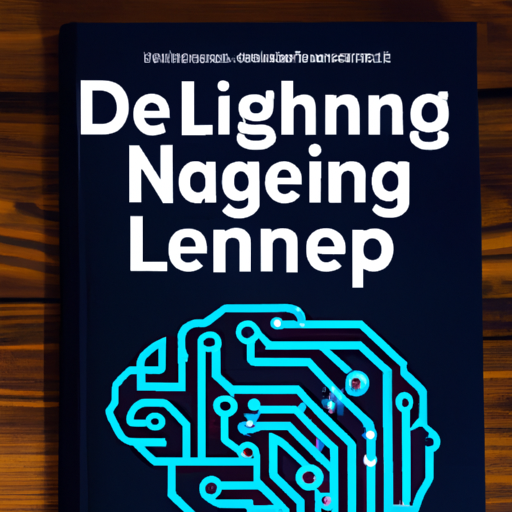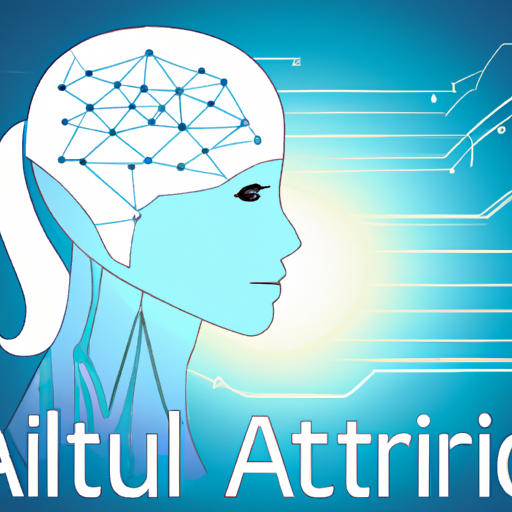-
Table of Contents
- Introduction
- The Role of Big Data in Deep Learning: What You Need to Know
- Understanding the Different Types of Deep Learning Networks
- The Impact of Deep Learning on Artificial Intelligence
- Exploring the Benefits of Deep Learning for Businesses
- How to Get Started with Deep Learning: A Step-by-Step Guide
- Conclusion
“Unlock the Power of Deep Learning with The Complete Guide!”
Introduction
Deep learning is a powerful and rapidly growing field of Artificial Intelligence (AI) that is revolutionizing the way we interact with technology. It is a subset of machine learning, which is a branch of AI that focuses on the development of computer programs that can learn from data and make decisions without being explicitly programmed. Deep learning is a subset of machine learning that uses algorithms to model high-level abstractions in data by using multiple layers of processing. It is a powerful tool for solving complex problems and has been used in a variety of applications, such as image recognition, natural language processing, and autonomous driving. This guide will provide an overview of deep learning, its applications, and how to get started with it.
The Role of Big Data in Deep Learning: What You Need to Know
Big Data and Deep Learning are two of the most important technologies of the 21st century. Big Data is the collection and analysis of large amounts of data, while Deep Learning is a type of artificial intelligence that uses algorithms to learn from data. The combination of these two technologies has the potential to revolutionize the way we interact with technology.
Big Data is essential for Deep Learning because it provides the data that is used to train the algorithms. Without large amounts of data, Deep Learning algorithms would not be able to learn and make accurate predictions. Big Data also helps to improve the accuracy of Deep Learning algorithms by providing more data points for the algorithms to learn from.
Big Data also helps to reduce the amount of time it takes to train Deep Learning algorithms. By providing more data points, Deep Learning algorithms can learn faster and more accurately. This reduces the amount of time it takes to develop and deploy Deep Learning applications.
Big Data also helps to improve the accuracy of Deep Learning algorithms by providing more data points for the algorithms to learn from. By providing more data points, Deep Learning algorithms can learn more accurately and make better predictions. This helps to reduce the amount of time it takes to develop and deploy Deep Learning applications.
Finally, Big Data helps to reduce the cost of Deep Learning applications. By providing more data points, Deep Learning algorithms can learn faster and more accurately, which reduces the amount of time and money it takes to develop and deploy Deep Learning applications.
In conclusion, Big Data is essential for Deep Learning because it provides the data that is used to train the algorithms. Big Data also helps to reduce the amount of time it takes to train Deep Learning algorithms, improve the accuracy of Deep Learning algorithms, and reduce the cost of Deep Learning applications.
Understanding the Different Types of Deep Learning Networks
Deep learning is a type of artificial intelligence (AI) that is modeled after the human brain. It is a subset of machine learning, which is a branch of AI that focuses on the development of computer programs that can learn and adapt to new data. Deep learning networks are used to solve complex problems that require a high level of accuracy and precision.
There are several different types of deep learning networks, each with its own unique characteristics and applications. The most common types of deep learning networks are convolutional neural networks (CNNs), recurrent neural networks (RNNs), and generative adversarial networks (GANs).
Convolutional neural networks (CNNs) are used for image recognition and classification. They are composed of multiple layers of neurons that are connected to each other in a hierarchical structure. CNNs are able to identify patterns in images and classify them into different categories.
Recurrent neural networks (RNNs) are used for natural language processing and speech recognition. They are composed of multiple layers of neurons that are connected in a loop. RNNs are able to remember information from previous inputs and use it to make predictions about future inputs.
Generative adversarial networks (GANs) are used for image generation. They are composed of two neural networks, a generator and a discriminator. The generator creates images from random noise, while the discriminator evaluates the generated images and determines whether they are real or fake.
Each type of deep learning network has its own unique advantages and disadvantages. CNNs are good for image recognition and classification, while RNNs are better for natural language processing and speech recognition. GANs are good for image generation, but they require a lot of data to train.
No matter which type of deep learning network you choose, it is important to understand the different types and how they work in order to get the most out of your AI system.
The Impact of Deep Learning on Artificial Intelligence
Deep learning is a subset of artificial intelligence (AI) that has revolutionized the field of AI in recent years. It is a type of machine learning that uses algorithms to model high-level abstractions in data by using multiple layers of processing. Deep learning has enabled machines to learn from large amounts of data and to make decisions with greater accuracy than ever before.
Deep learning has had a profound impact on the field of AI. It has enabled machines to learn from large amounts of data and to make decisions with greater accuracy than ever before. Deep learning algorithms are able to identify patterns in data that were previously too complex for traditional machine learning algorithms. This has enabled machines to make decisions that are more accurate and reliable than ever before.
Deep learning has also enabled machines to learn from unstructured data, such as images and videos. This has enabled machines to recognize objects in images and videos with greater accuracy than ever before. Deep learning has also enabled machines to understand natural language, allowing them to interact with humans in a more natural way.
Deep learning has also enabled machines to make decisions faster than ever before. This has enabled machines to respond to changing conditions in real-time, allowing them to make decisions quickly and accurately.
In conclusion, deep learning has had a profound impact on the field of AI. It has enabled machines to learn from large amounts of data and to make decisions with greater accuracy than ever before. It has also enabled machines to understand natural language and to make decisions faster than ever before. Deep learning has revolutionized the field of AI and will continue to do so in the future.
Exploring the Benefits of Deep Learning for Businesses
Deep learning is a powerful tool that is revolutionizing the way businesses operate. It is a subset of artificial intelligence (AI) that uses algorithms to process data and identify patterns. Deep learning has the potential to revolutionize the way businesses operate, from automating mundane tasks to providing insights into customer behavior.
The most obvious benefit of deep learning is its ability to automate mundane tasks. By using deep learning algorithms, businesses can automate mundane tasks such as data entry, customer service, and even marketing. This can free up valuable time and resources that can be used to focus on more important tasks. Additionally, deep learning can be used to automate decision-making processes, allowing businesses to make decisions faster and more accurately.
Deep learning can also be used to gain insights into customer behavior. By analyzing customer data, businesses can gain valuable insights into customer preferences and buying habits. This can help businesses tailor their products and services to better meet customer needs. Additionally, deep learning can be used to identify potential customer segments and target them with tailored marketing campaigns.
Finally, deep learning can be used to improve the accuracy of predictions. By analyzing large amounts of data, deep learning algorithms can identify patterns and trends that can be used to make more accurate predictions. This can be used to predict customer behavior, market trends, and even the success of new products and services.
In conclusion, deep learning is a powerful tool that can revolutionize the way businesses operate. It can automate mundane tasks, gain insights into customer behavior, and improve the accuracy of predictions. By leveraging the power of deep learning, businesses can gain a competitive edge and increase their profitability.
How to Get Started with Deep Learning: A Step-by-Step Guide
Deep learning is a powerful and rapidly growing field of artificial intelligence (AI) that has the potential to revolutionize many aspects of our lives. It is a type of machine learning that uses algorithms to learn from data and make predictions. Deep learning has been used to create self-driving cars, detect cancer, and even beat the world’s best Go players.
If you’re interested in getting started with deep learning, this guide will provide you with a step-by-step overview of the process.
Step 1: Learn the Basics
Before you can dive into deep learning, you need to understand the basics. Start by learning the fundamentals of machine learning, such as supervised and unsupervised learning, neural networks, and deep learning algorithms. You can find plenty of resources online to help you get started.
Step 2: Choose a Platform
Once you’ve got the basics down, it’s time to choose a platform for your deep learning project. Popular options include TensorFlow, Keras, and PyTorch. Each platform has its own advantages and disadvantages, so it’s important to do your research and choose the one that best fits your needs.
Step 3: Gather Data
Data is the lifeblood of deep learning, so you’ll need to gather a large dataset to train your model. You can find datasets online or create your own. Make sure the data is labeled and organized in a way that makes it easy to use.
Step 4: Build Your Model
Now it’s time to build your deep learning model. Depending on the platform you’ve chosen, you’ll need to write code to define the model’s architecture and parameters. You can also use pre-trained models to speed up the process.
Step 5: Train Your Model
Once your model is built, you’ll need to train it on your dataset. This is done by feeding the data into the model and adjusting the parameters until the model is able to make accurate predictions.
Step 6: Evaluate Your Model
Once your model is trained, you’ll need to evaluate its performance. This can be done by testing the model on a separate dataset and measuring its accuracy.
Step 7: Deploy Your Model
Finally, you’ll need to deploy your model so that it can be used in the real world. Depending on your platform, this may involve writing code to integrate the model into an existing application or creating a web service to make the model accessible over the internet.
By following these steps, you’ll be well on your way to becoming a deep learning expert. Good luck!
Conclusion
The Complete Guide to Deep Learning is an invaluable resource for anyone interested in learning more about this rapidly growing field. It provides a comprehensive overview of the fundamentals of deep learning, as well as detailed explanations of the various algorithms and techniques used in the field. With its clear and concise explanations, this guide is an excellent starting point for anyone looking to gain a better understanding of deep learning and its potential applications.



